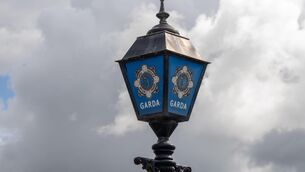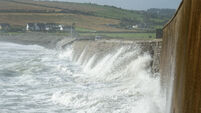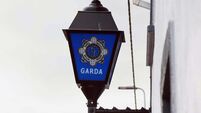Human remains found in Cork pub not from Viking era
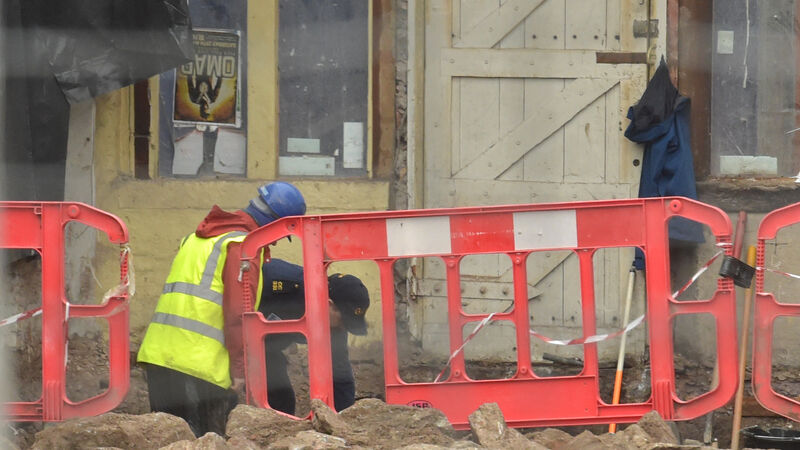
A Garda with a workman on the site of the former Nancy Spain's pub on Barrack Street, Cork, where the human remains have been discovered. Picture: Dan Linehan
Archaeologists are set to examine a set of historic skeletal human remains which were found buried under a partially demolished pub close to the medieval heart of Cork city.
It's understood the remains, which were found on the site of the former Nancy Spain’s pub on Barrack Street, one of the oldest streets in the city, are not from the Viking era, given the depth at which they were found.
However, following an initial visual inspection on the remains in-situ, the bones are believed to be at least 100-years-old, classed as an archaeological find.
Precise dating will only be possible through carbon dating, if the bones are suitable, a process that could take months.
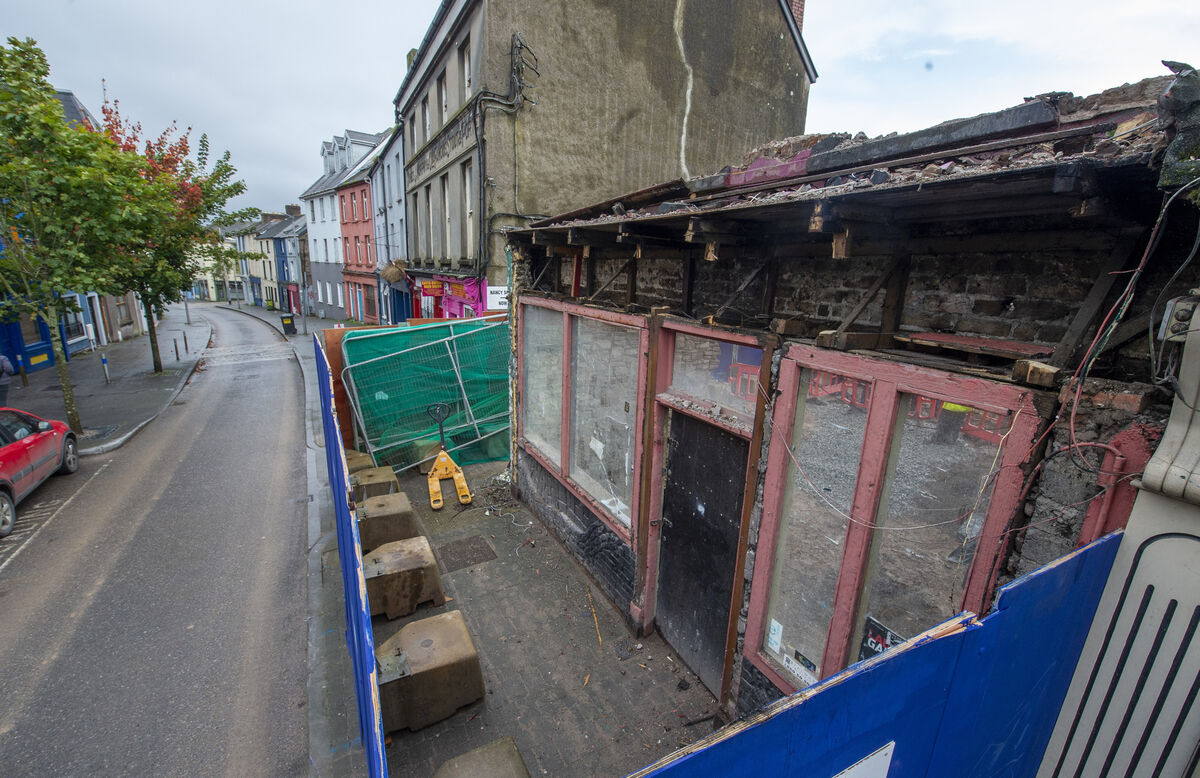
MMD Contractors have been on site for several weeks and they have demolished all but the facade of Nancy Spain's - once one of the city’s most popular music venues, and where David Gray played his first Irish gig, to pave the way for a city council designed 32-unit social housing project which will wrap around a courtyard between the former Nancy Spain’s site and the former Quinnryan pub site.
The site is within a zone of archaeological potential and archaeological mitigation measures are in place for the groundworks phase.
A consultant archaeologist was monitoring the groundworks when a partial skeleton was unearthed, and the work was halted just after 11am.
It was found lying on its back beneath several layers of subsoil under the pub's now-demolished floor.
Gardaí, the coroner and the city archaeologist, Ciara Brett, were notified and gardaí arrived on scene to preserve the site.
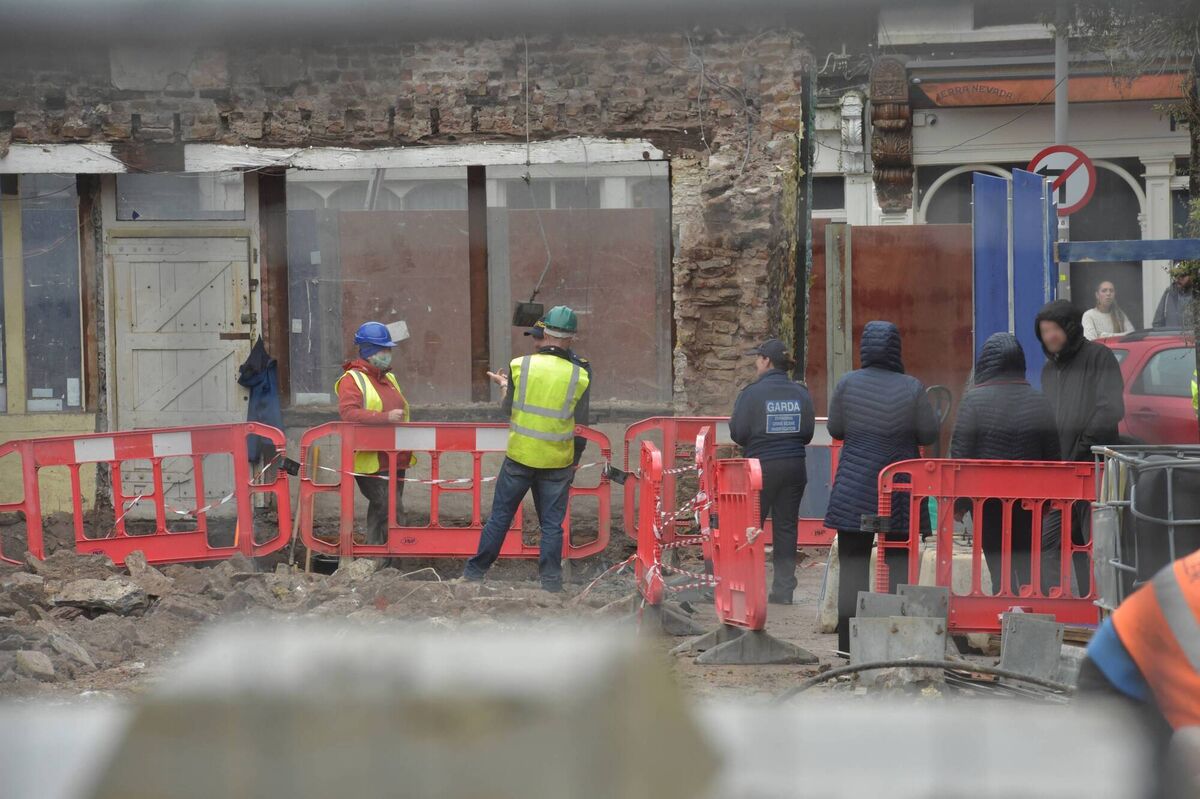
But following a preliminary inspection of the remains by the archaeologist and garda scenes of crime experts, the bones were deemed a historic find and the garda investigation was stood down.
Arrangements are now being finalised for the detailed recording of the bones in-situ, by the consultant archaeologist and an osteoarchaeologist, and for their removal under special license from the National Monuments Service.
A number of other features of “archaeological interest” have also been found on the site, including what's believed to be a section of an ancient wall or a trench structure, and several shards of pottery. They are still under investigation and reports are awaited.
Sources said they would not be surprised if more items or bones are found on the site over the coming weeks.
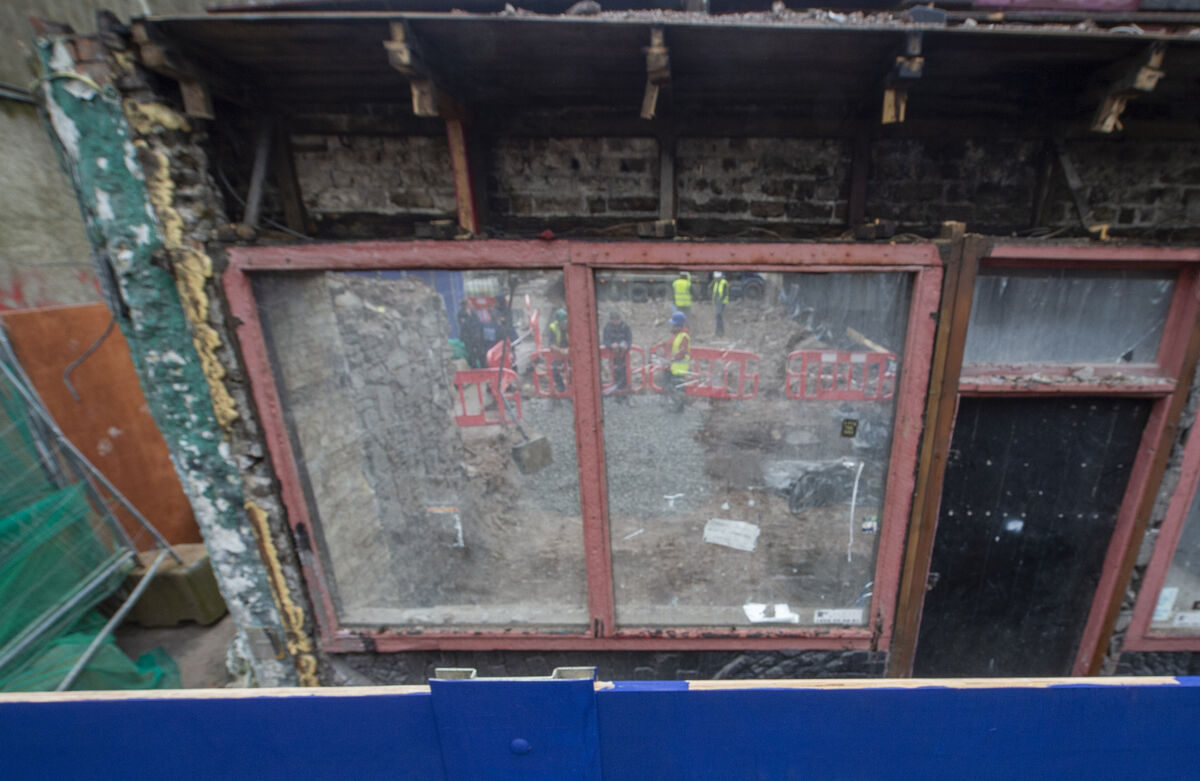
The site is very close to the historic Elizabeth Fort and to the medieval heart of the city.
A perfectly preserved 1,000-year-old Viking sword was found in 2017 during construction work at the former Beamish and Crawford brewery site, which is a few hundred metres away.
The Part 8 planning process for this housing development dates back to 2017 but work finally got underway in recent weeks.
It is hoped that the development of housing on this key site so close to the city centre will help to revitalise the historic street.







